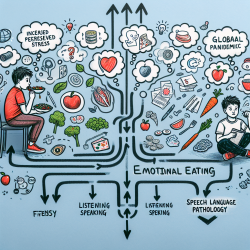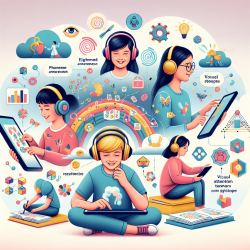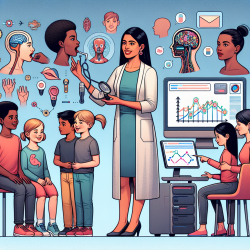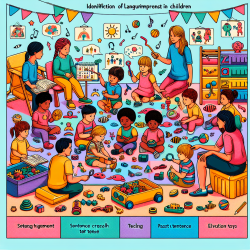Introduction
During the COVID-19 pandemic, stress levels soared globally, influencing various aspects of daily life, including eating behaviors. A recent study, "A Humanities-Based Explanation for the Effects of Emotional Eating and Perceived Stress on Food Choice Motives during the COVID-19 Pandemic," provides valuable insights into how stress and emotional eating affect food choices. For practitioners working with children, understanding these dynamics is crucial for promoting healthier eating habits and overall well-being.
Key Findings
The study revealed that perceived stress significantly correlates with emotional eating and influences food choice motives such as mood, convenience, natural content, price, and familiarity. Emotional eating was found to mediate the relationship between stress and several food choice motives, highlighting the complex interplay between psychological stress and dietary behaviors.
Implications for Practitioners
Practitioners can leverage these findings to enhance their interventions with children. Here are some actionable strategies:
- Recognize Emotional Triggers: Identify stressors that may lead to emotional eating in children. Understanding these triggers can help in developing personalized interventions.
- Promote Mindful Eating: Encourage children to pay attention to hunger cues and emotional states before eating. Mindful eating can reduce the tendency to eat in response to stress.
- Focus on Healthy Alternatives: Guide children towards healthier food choices that satisfy the same motives as comfort foods, such as mood enhancement or convenience, without compromising nutrition.
- Incorporate Relaxation Techniques: Teach children relaxation techniques to manage stress, which can reduce the likelihood of emotional eating.
Encouraging Further Research
The study opens avenues for further research, particularly in understanding how these dynamics play out in different populations and settings. Practitioners are encouraged to explore how cultural, social, and individual factors influence emotional eating and food choices in children. This can lead to more tailored and effective interventions.
Conclusion
Understanding the relationship between stress, emotional eating, and food choice motives is vital for practitioners aiming to improve children's health outcomes. By applying these insights, practitioners can help children develop healthier eating habits, even in stressful times.
To read the original research paper, please follow this link: A Humanities-Based Explanation for the Effects of Emotional Eating and Perceived Stress on Food Choice Motives during the COVID-19 Pandemic.










